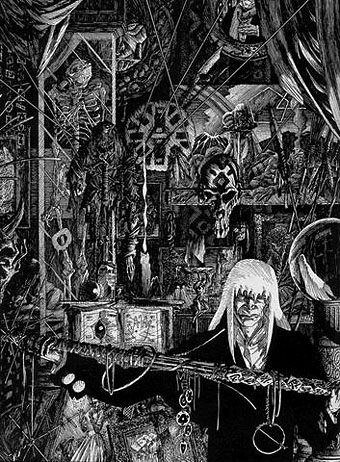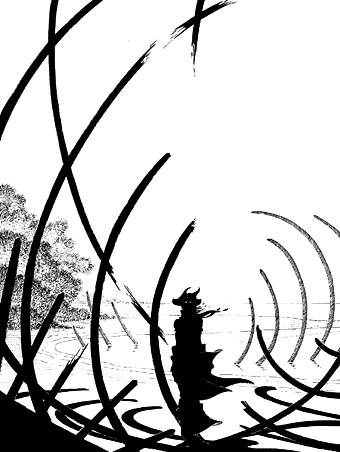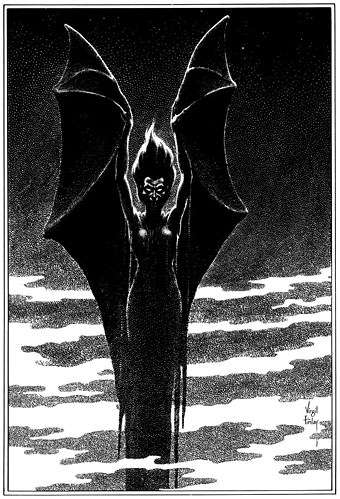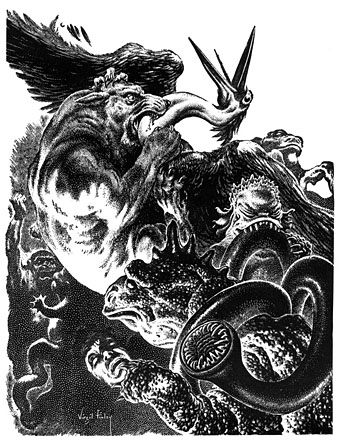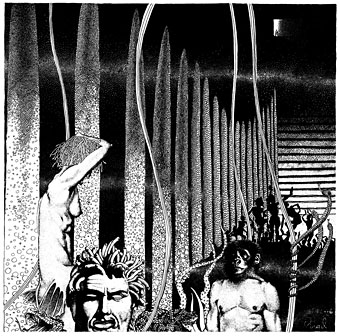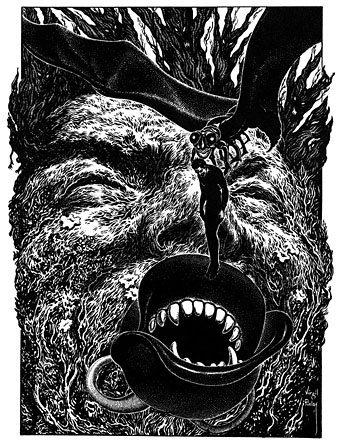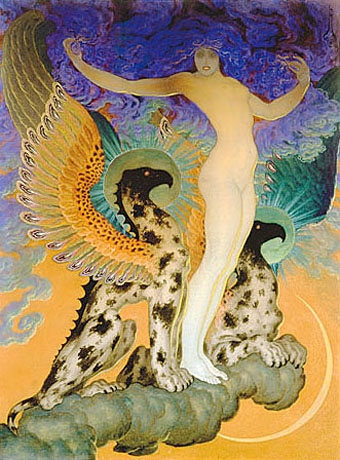
The Masque of the Red Death.
Halloween approaches so let’s consider the finest illustrator of Edgar Allan Poe’s stories, Irish artist Harry Clarke. Aubrey Beardsley once declared “I am grotesque or I am nothing” yet even his grotesquery—which could be considerable—struggled to do justice to Poe. Clarke, the best of the post-Beardsley illustrators, found a perfect match in the Boston writer’s Tales of Mystery and Imagination, his edition being published by Harrap in 1919. He could decorate fairy tales with the best of the great Edwardian book illustrators but a flair for the morbid blossomed when he found Poe. Only his later masterpiece, Goethe’s Faust, improved on the dark splendour of these drawings. “Never before have these marvellous tales been visually interpreted with such flesh-creeping, brain-tainting illusions of horror, terror and the unspeakable” wrote a critic in The Studio.
Lots more pictures at Grandma’s Graphics (although none of the colour plates, unfortunately) including many of the Faust drawings. Wikipedia has photos of some of Clarke’s incredible stained-glass windows, as does Bud Plant’s biography page.
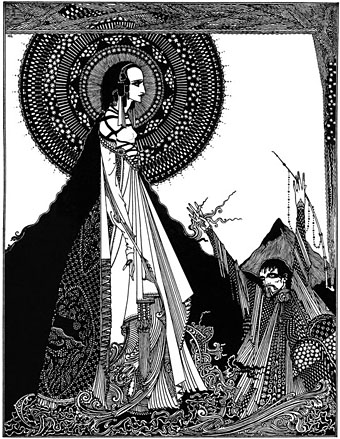
Ligeia.
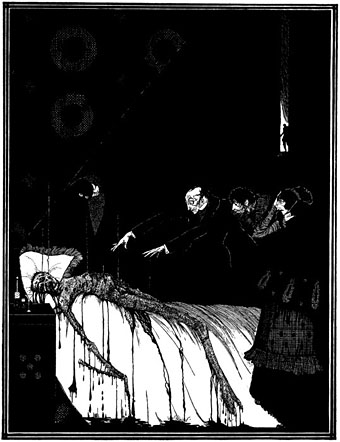
The Facts in the Case of M. Valdemar.
Elsewhere on { feuilleton }
• The illustrators archive
